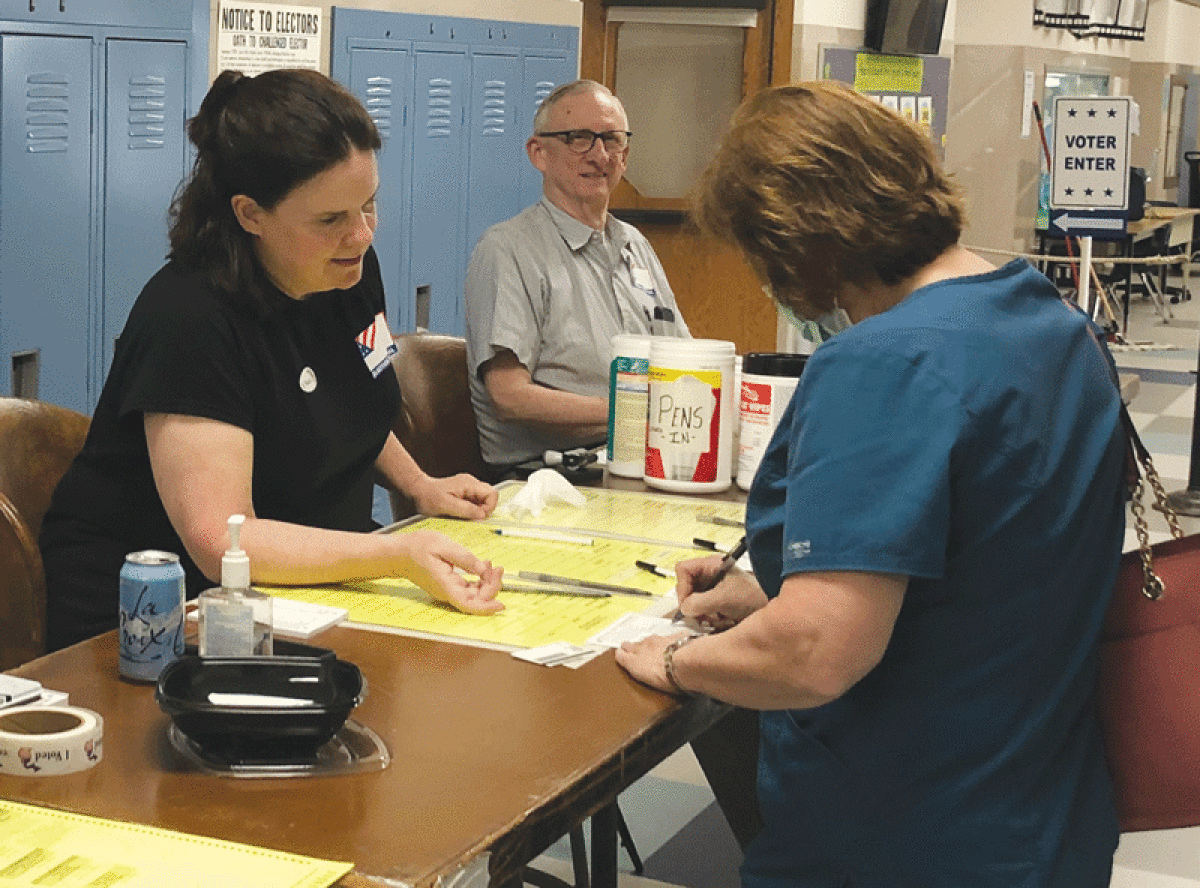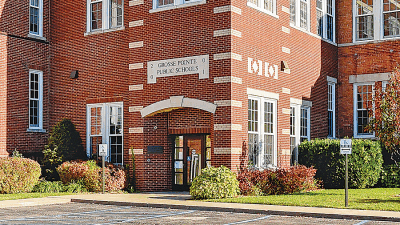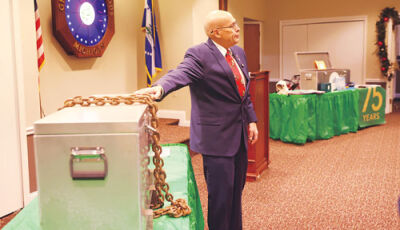GROSSE POINTES — In the Grosse Pointes, the Aug. 2 primary election demonstrated the trend toward absentee voting.
Throughout the five Pointes, unofficial vote counts available at press time show that, for the most part, more than half of those who cast ballots did so via the absentee method. Michigan now allows no-reason absentee voting, and more voters are taking advantage of this option.
“I think more and more people are doing absentee,” said Seemab Iqbal, a Grosse Pointe Park resident who was campaigning outside Maire Elementary School in Grosse Pointe City all day for Democratic 13th District Congressional candidate Shri Thanedar. Thanedar was the winner in that race, with current state Sen. Adam Hollier coming in second in the hotly contested Democratic primary.
In the Michigan Senate’s District 12, two candidates ran in the Republican primary: Pamela Hornberger and Michael D. Williams. Hornberger defeated Williams, 19,198 votes to 10,547, according to the unofficial results from the state of Michigan. Democrat Kevin Hertel ran unopposed in the primary.
The winner between Hornberger and Hertel in November will serve a four-year term. The district spans Wayne, Macomb and St. Clair counties, and it includes the Grosse Pointe communities, St. Clair Shores, Harrison Township, Mount Clemens and part of Clinton Township. It also includes Chesterfield Township, New Baltimore, Ira Township, Anchorville, Fair Haven, Clay Township, Algonac and Harsens Island.
State Rep. Joe Tate, D-Detroit — who currently represents the 2nd District — will be his party’s nominee for state representative in the new 10th District in November, having defeated Toni Mua in the primary. Tate will be running against Republican Mark Corcoran, who ran unopposed in the primary.
Wayne County Commissioner Tim Killeen, D-Detroit, will be running for another two-year term, having beaten challenger Brian Banks in the primary. Killeen will be squaring off against Republican challenger John Barry Anderson, who was unopposed in his primary bid to be the Republican nominee in the 1st District.
Current Wayne County Sheriff Rafael Washington and Wayne County Executive Warren Evans, both Democrats, were chosen by primary voters to represent their party on the November ballot. Evans will be facing Republican challenger Mark Ashley Price, who ran unopposed for the Republican nomination, in November. There was no Republican on the primary ballot for the county sheriff’s race.
Proposition J, a Wayne County jails millage renewal, was approved by voters, with 61.46% in favor of it and 38.54% opposed. It will retain the current rate of 0.9358 mills — a rate that was rolled back in 2021 — for another 10 years, through 2031. County officials said the millage will raise about $45 million annually for jail operations. For anyone living in a home worth $150,000, the millage will cost approximately $70 per year.
Voter turnout in the Pointes was in the 30% range overall for the primary.
“(It’s) a long way from a record,” said Steve Trowbridge, an election worker at Maire. “It’s been steady.”
His observation was echoed by Mary Rachal, of Canton, who was campaigning outside Maire for Democratic 13th District Congressional candidate Sherry Gay-Dagnogo.
Voter turnout in the City was roughly 33%. It was 32% in Grosse Pointe Shores and almost 39% in Grosse Pointe Woods. Turnout in the Pointes was higher than it was in Wayne County overall, where it was just over 21%.
In Grosse Pointe Farms, voter turnout was 34.22%, according to unofficial vote counts available at press time.
“I would say turnout has been rather light,” said Jerome Pokorney, of Warren, who was campaigning for Democratic Wayne County Sheriff Rafael Washington outside Grosse Pointe South High School in the Farms.
That sentiment was borne out inside South, as well.
“Surprisingly, the number of voters (on election day) is much less, and I think it’s due to the number of voters voting absentee,” said Connie Boris, co-chair of Precinct 1 at South.
“I’m proud of our city,” said Christine Wujek, a Precinct 1 election inspector. She said she encountered many enthusiastic voters while working at the polls.
“(I’ve seen) lots of first-time voters today,” Wujek said. “They were so excited. And lots of families with their children, showing them how to vote.”
Youngsters were especially delighted about the “I Voted” stickers.
In Grosse Pointe Park, turnout was 34.09%.
“It’s been steady all day,” said Karen Biolchino, an election inspector for Precinct 2 at the Tompkins Center.
Grosse Pointe Farms and Grosse Pointe Park both found themselves combining multiple polling spots because the standard locations weren’t available.
In the Farms, Assistant City Manager/City Clerk Derrick Kozicki said voters couldn’t cast ballots at Brownell Middle School or Kerby Elementary School because both sites were under construction in August, so those precincts were moved to Grosse Pointe South High School, which was already a voting site for another precinct.
“It kind of showed us the direction we want to go in,” Kozicki said. “There was great synergy amongst the election workers.”
Kozicki said it was also more convenient for anyone campaigning for candidates and said the Grosse Pointe Public School System “was very helpful” in making arrangements for the city to use the South gym for voting instead of a smaller classroom.
“This was a good experiment, to learn about the challenges and benefits of having a number of precincts at one polling location,” Kozicki said.
While he said the Farms would return to its regular polling places in November, the city is exploring the possibility of housing multiple precincts in just one or two locations in the future.
In the Park, all the city’s precincts were moved to Windmill Pointe Park, where five precincts were housed in the Lavins Center and two were in the Tompkins Center.
“I think it’s going really well,” Deputy Clerk Courtney Delmege said. “I haven’t heard any complaints.”
She said the consolidated locations made it easier for anyone campaigning for candidates, as well, since they didn’t need to have people at multiple polling spots.
“It’s kind of a good trial run,” said Delmege, noting that Park voters who cast ballots in person on Election Day in November will be doing so again at Windmill Pointe Park.
Delmege said the Park “did have a lot of absentee” ballots for the primary.
Park resident Mary Rouleau, who was campaigning for Hollier at Windmill Pointe Park, said she just wants to make sure that everyone who wanted to vote was able to do so. She said a number of people she knows would walk to their neighborhood polling location in the past.
“I think it should have been vetted with the public first,” Rouleau said of moving all the polling locations to Windmill Pointe Park this year. “And a better explanation given up front. I think access to the polls trumps everything.”
Rouleau said she hopes the city will make changes if it gets feedback from voters that the new polling spot made voting difficult for them.
Park election officials on Aug. 9 released results of a satisfaction survey of 150 voters at Windmill Pointe Park, asking them to weigh in on the new polling location. Using a scale of 1 to 5, with 5 equal to the best voting experience and 1 equal to the worst voting experience, 127 survey participants ranked their experience a 5, nine ranked it a 4, six ranked it a 3, one ranked it a 2 and seven ranked it a 1.
 Publication select ▼
Publication select ▼





















